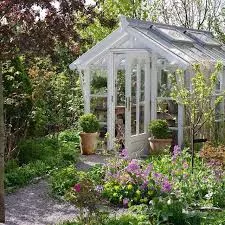6 Tips For Heating Your Greenhouse During Winter

Keeping your winter greenhouse warm is an efficient and essential part to help prevent your plants from going soggy, damp and icy. Protecting your greenhouse will allow new plants to grow healthy during the springtime too. This is why we have provided a useful guide on tips that can reduce your costing’s and energy.
1. Use a Thermostat
You can save your energy bill by only turning on your heating for when it is needed. Using a thermostat can help you identify when temperatures have dropped below a certain point. The majority of greenhouses have build-in thermostats, however it is ideal to have one if your greenhouse does not.
2. Use Bubble Wrap For Insulation
Protecting your greenhouse from the inside with one layer of bubble wrap can help prevent any heat loss from escaping, and any cold weather trying to come inside. A horticultural bubble wrap is great for greenhouses, since it is resilient and UV balanced.
3. Only Heat Necessary Areas
When you have a large greenhouse, heating up the entire room can be wasteful and can involve spending unnecessary costs. In order to be economically efficient, it is a good idea to group all your plants close together in one area, and cover the area with layers of bubble wrap to divide the greenhouse in smaller areas.
4. Use Ventilation
Many greenhouses can create high humidity due to heating, which can potentially lead to the spread of fungal diseases and an unhealthy growing environment. Therefore it is important to control the humidity in your greenhouse to prevent this from happening. Make sure to spray your plants early in the morning, creating a build up of watering them only when it is needed to prevent moisture.
5. Position Heaters Correctly
Position electric fan heaters in open areas, and avoid positions where the heather may come into contact with water. If required, you can turn the electric fan towards the direct airflow just above your plants, which will prevent any foliage from occurring.
6. Use a Thermometer
Invest in a good thermometer that has minimum and maximum readings, and make sure to monitor the readings on a regular basis. You can work more economically efficient and adjust your activities when required by simply monitoring the air temperature.

